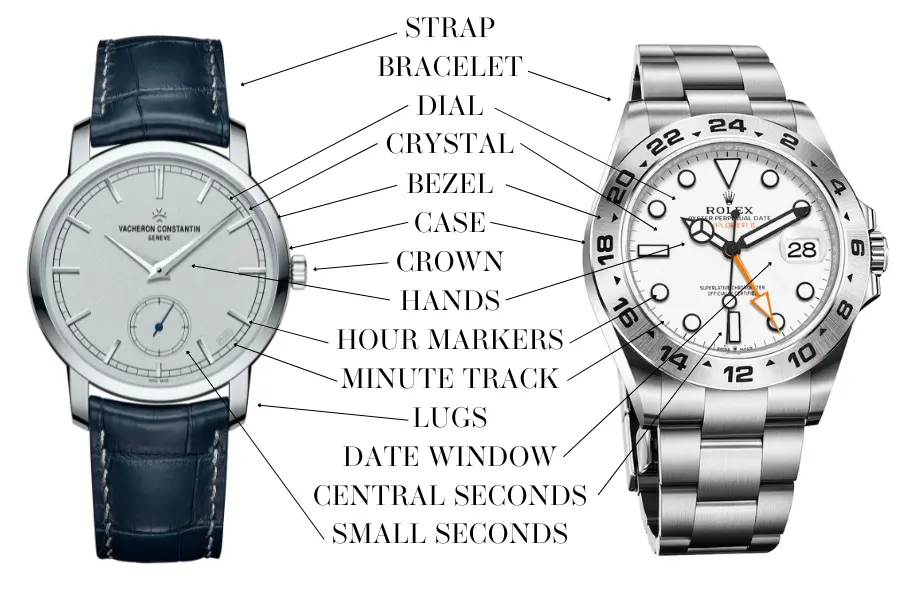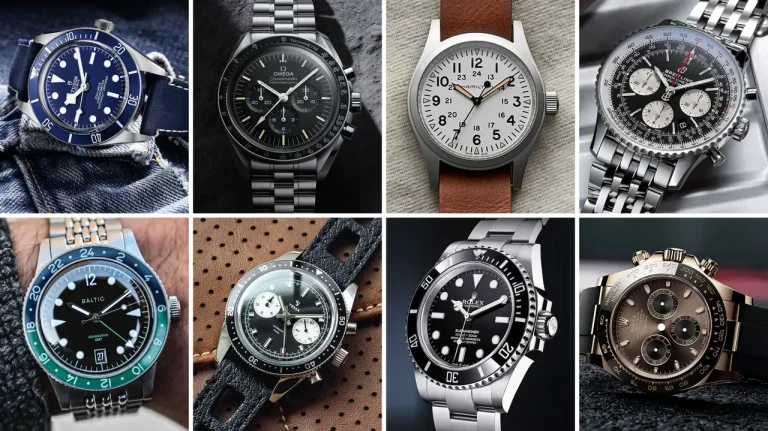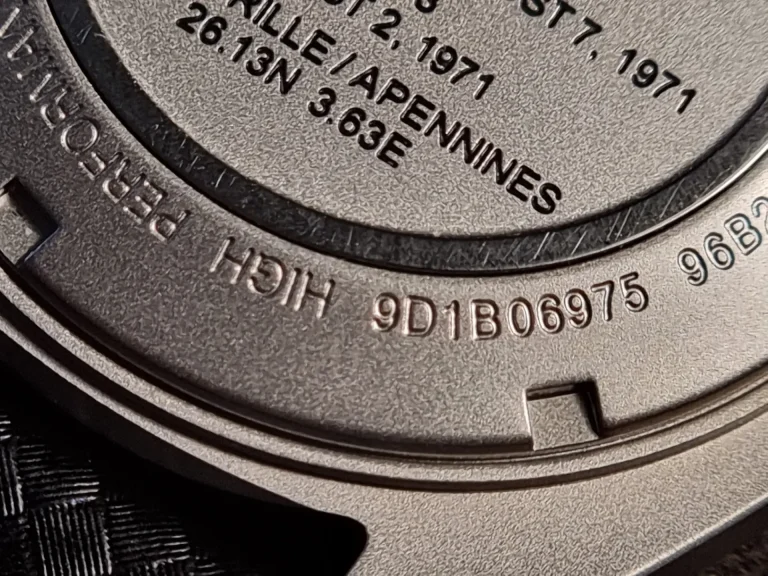Every watch is composed of essential parts that affect its performance and style. This article breaks down the main components to give you a better understanding of how watches work. Whether you are buying a new watch or learning more about your current one, this guide will help you navigate the details.
A watch typically consists of three key elements: the main parts, the watch band, and various watch complications. These components include smaller, detailed parts such as:
Main Parts
- Case
- Crystal
- Crown
- Bezel
- Dial
- Hands
- Hour Markers
- Jewels
- Movement
Watch Band
- Strap (Bracelet)
- Adjustment Holes
- Buckle (Clasp)
- Lugs
- Lug Holes
Adjustment & Display Features
- Pusher
- Aperture
- Sub-dial
Main Parts of a Watch
1. Case
The case is the outer shield of a watch to house and protect the delicate components and internal mechanisms. Therefore, it is one of the most influential and visible elements of a watch’s functionality and design. Indeed, watch cases come in various materials, shapes and finishes, contributing to different impacts on the watch’s appearance and performance.
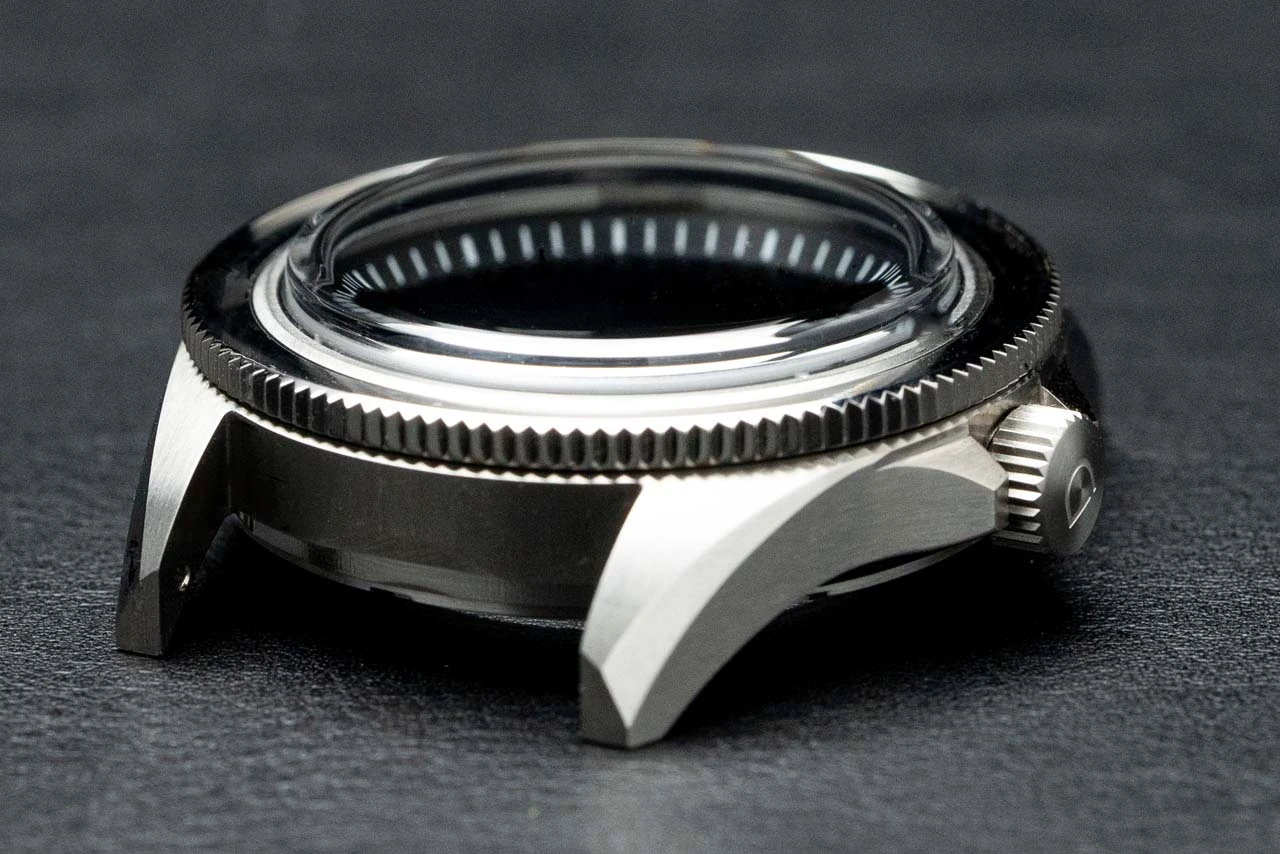
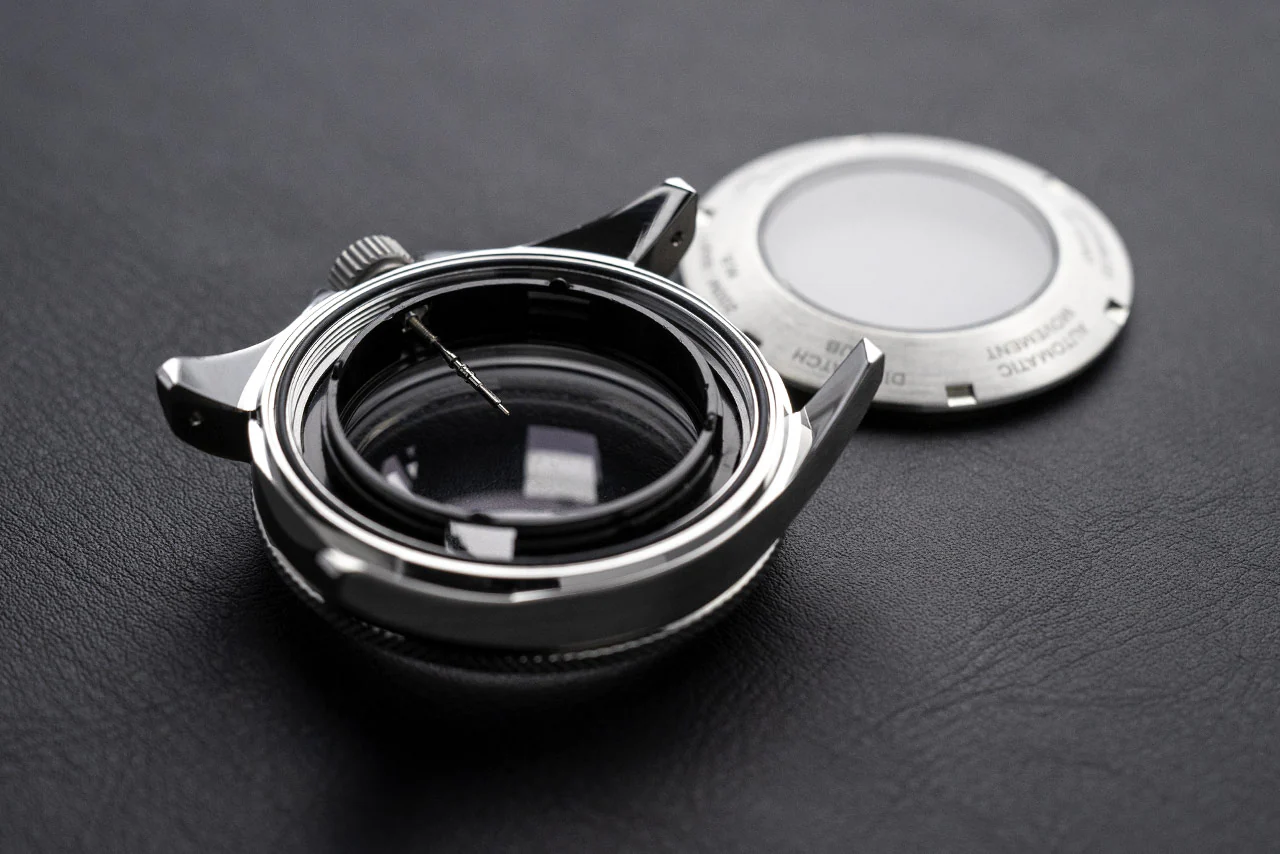
What materials are used in watch cases?
Watch cases are crafted from materials like stainless steel, titanium, ceramic, and even gold or platinum for luxury models.
- Stainless steel is a popular choice due to its durability, affordability and resistance to corrosion, while titanium offers a lightweight yet strong alternative.
- Ceramic is known for its highly scratch resistance and sleek look, often found in high-end watches.
- Otherwise, precious metals like gold or silver offer luxury, prestige and come in numerous colors, such as rose gold, white, etc.
What are the different shapes of watch cases?
The watch cases come in various shapes, such as round, square, rectangular, tonneau, cushion, oval, octagonal.
The round case is the most common shape with classic and timeless aesthetic, while square and rectangular designs offer a modern and distinctive look.
Cushion watch case is a rectangular case with rounded corners for a unique and contemporary look. Otherwise, tonneau, also known as barrel-shaped case, is often associated with vintage-inspired designs.
What types of finishes are found in watch cases?
Watch cases feature various finishes, from brushed to polished or a combination of both like satin.
A polished finish offers a mirror-like glossy, sleek appearance, while a brushed finish or matte finish provides texture and hides small scratches, making it perfect for everyday wear. Otherwise, satin finish delivers a balanced aesthetic.
2. Crystal
The crystal is the transparent cover sitting on top of the watch to protect the watch’s dial, hands from external impacts like dust, water. It plays a crucial role in maintaining the watch’s readability and durability.
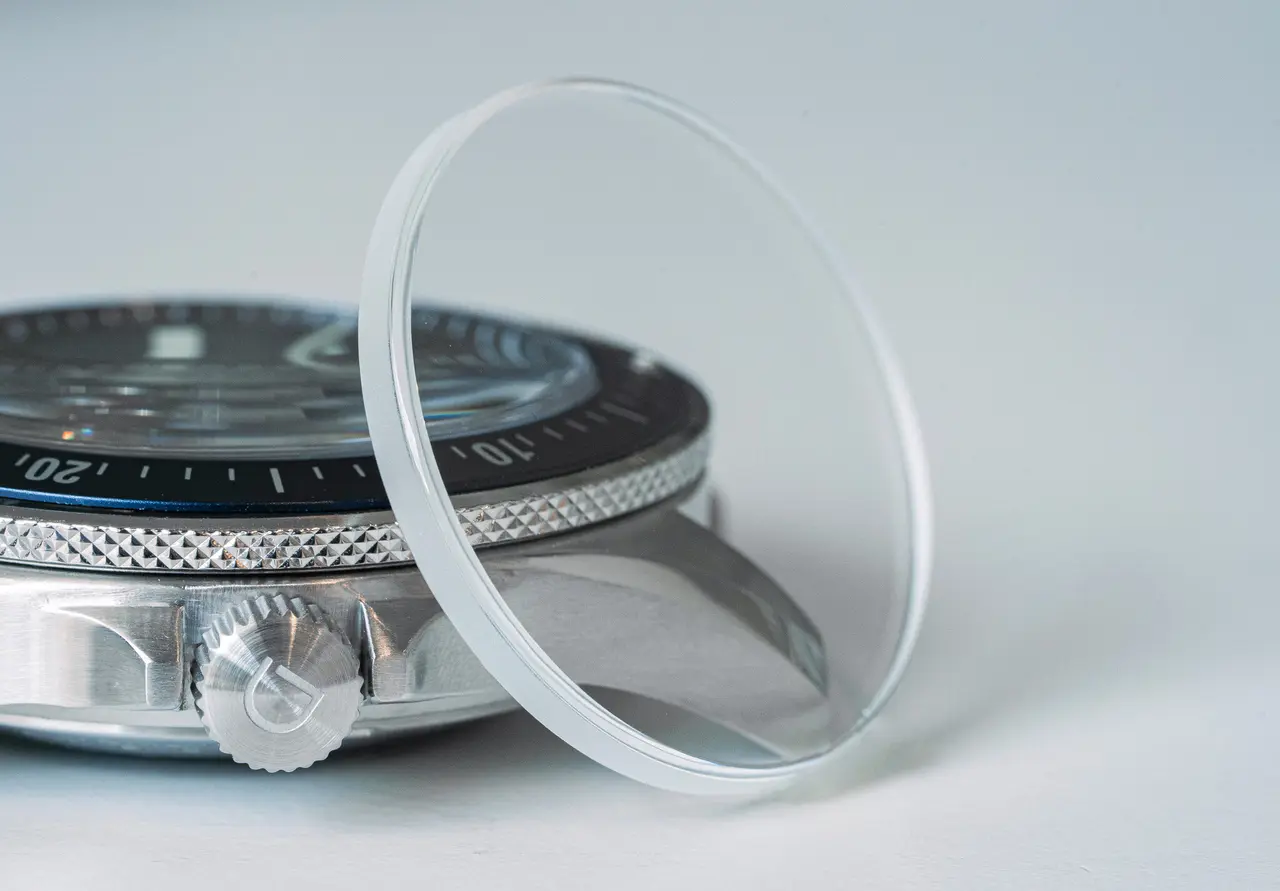
What materials are watch crystals made of?
Sapphire, mineral glass and acrylic are common materials of watch crystals.
- Sapphire crystal is often found in high-end watches due to its exceptional scratch resistance and clarity, making it an ideal choice for luxury timepieces.
- Mineral glass, on the other hand, is more affordable and offers decent scratch resistance. Hence, it’s commonly used in mid-range watches and provides a good balance of durability and cost.
- Acrylic is more prone to scratches and may not provide the same level of protection as previously mentioned materials. Therefore, it is commonly used in vintage or entry-level watches and also easily buffed and replaced.
3. Crown
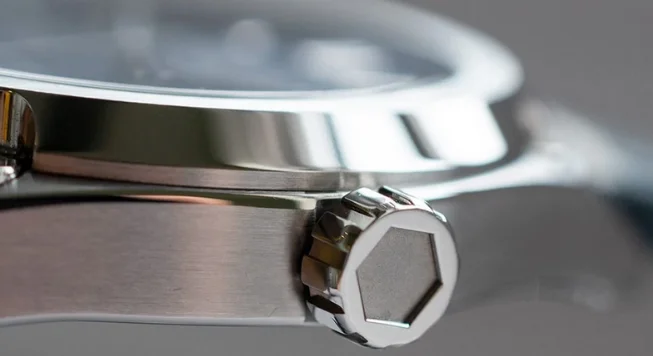
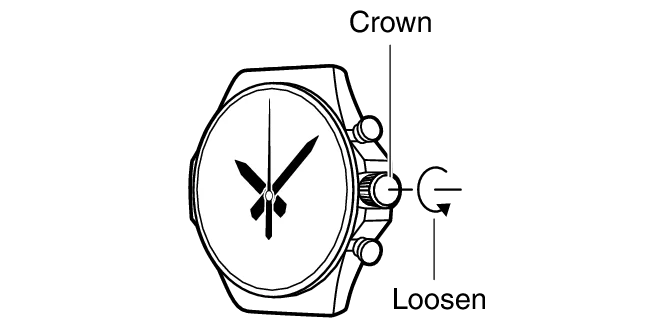
The crown is a small knob on the side of the watch case that is used to set the time, date, and wind the watch’s mechanical movement. It is a crucial component that allows for easy adjustment and operation.
What are the different types of watch crowns?
One of the common types of watch crowns is screw-down, push-pull crown, and recessed.
- A screw-down crown is crafted to be screwed down to seal the watch against water and dust. It is commonly found in dive watches and other models that require a high level of water resistance.
- Moreover, the push-pull crown is less water-resistant but simpler to operate, allowing you to pull it out to a different position to set the time or date and push it back in when finished.
- A recessed crown, on the other hand, is set slightly below the surface of the case, offering improved protection and a more streamlined look. However, it can be more difficult to use and may have limited functionality.
4. Bezel
The bezel is the ring that surrounds the watch crystal. Generally, the bezel is designed as a timekeeper or speed-measurer. Hence, you might find in some watches, the bezel can be rated to mark specific points in time, such as elapsed time during diving or racing. Besides, the bezel can be used to add decorative elements or enhance the watch’s design.
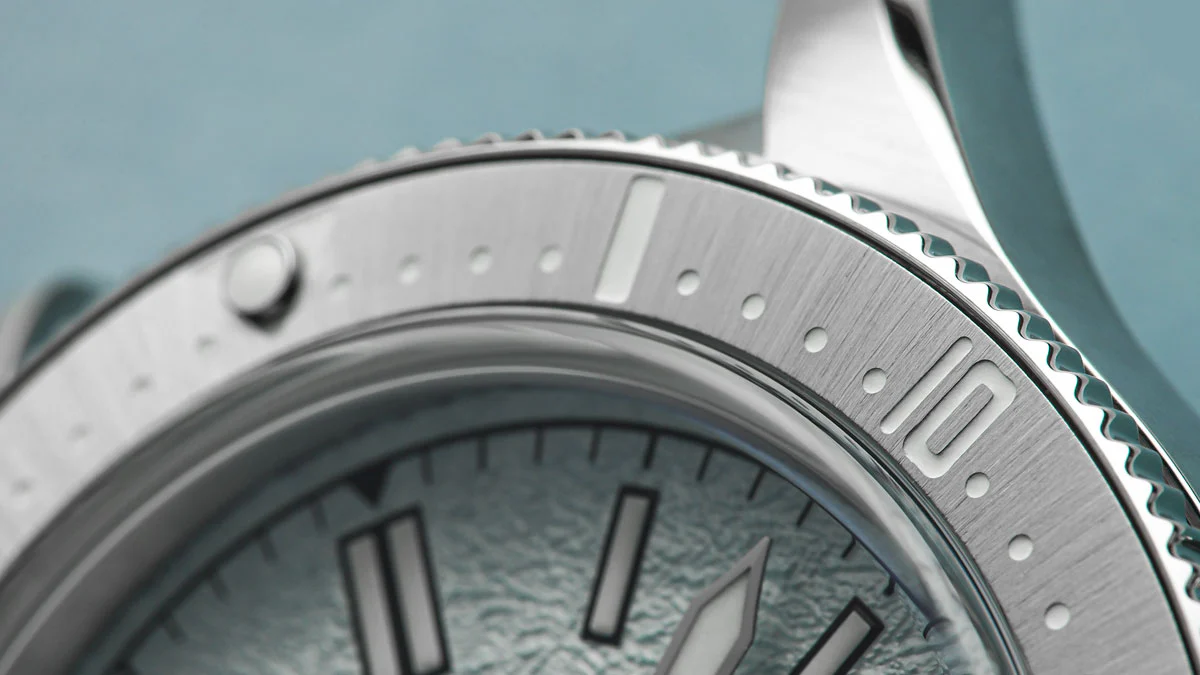
Watch bezels are categorized as two main types: fixed and rotating bezels.
Fixed bezel, as the name indicated, cannot be rotated and used for decorative purposes or to provide a platform for additional features like a tachymeter.
On the other hand, the rotating bezel is rotated for timing purposes. There are numerous rotating bezels such as dive, tachymeter, GMT, telemeter bezel with different characteristics and purposes.
| Types | Measure scale | Purpose |
| Dive bezel | diving scale | measure elapsed dive time |
| Tachymeter | tachymeter scale | measure average speed over a specific distance |
| Telemeter | telemeter scale | measure distance based on the speed of sound |
| GMT | a second time zone scale | travel or international timekeeping. |
5. Dial
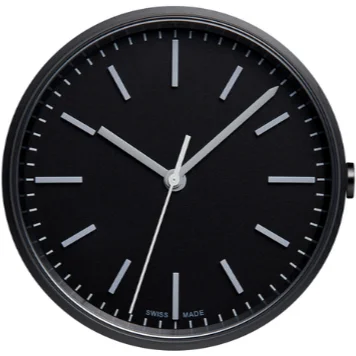
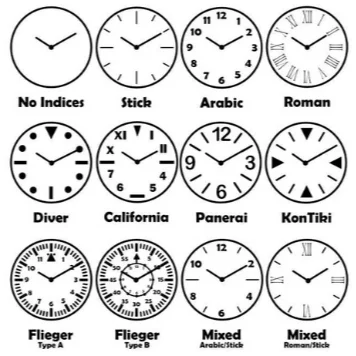
The dial is the face of the watch, where the time and other information are displayed. It is typically made of a durable material like enamel, metal, or ceramic, and is often decorated with various elements to enhance its appearance.
Some common components found on a watch dial include hands, hour markers, indices, logo, date window, sub-dials, etc.
6. Hands
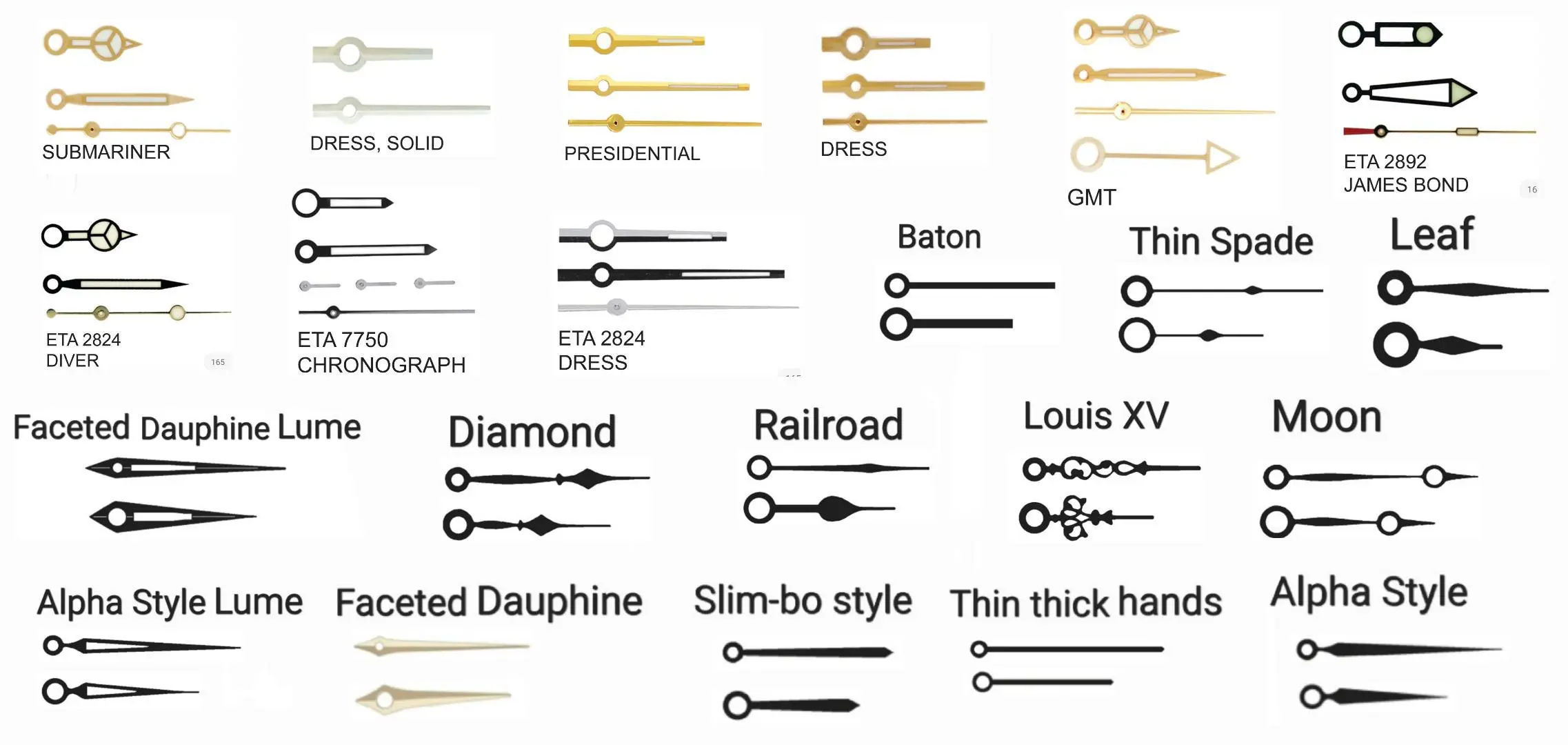
The hands are the moving indicators on a watch dial that point to the current time. They typically include an hour hand, a minute hand, and a second hand. However, depending on the watch type, there are more additional hands to serve a specific purpose.
What are the different types of watch hands? Watch hands come in various types and designs. Below are some typical examples for your reference.
| Types of watch hands | Key characteristics | Examples |
| Dauphine | Sharp, triangular, and tapered end with a sleek, elegant design | Dress or classic watches |
| Sword | Straight-edged and bold | Sport watches, military watches, field watches |
| Skeleton | Open or cut-out design, revealing movement beneath | Skeleton watches |
| Arrow | Hands with a distinctive arrow tip for clear readability | Sport watches, pilot watches |
| Leaf | Thin, elongated hands shaped like a leaf, elegant look | Vintage watches, luxury watches |
| Cathedral | Hands with a decorative, segmented design reminiscent of stained glass windows | Vintage watches, pilot watches |
7. Hour Markers
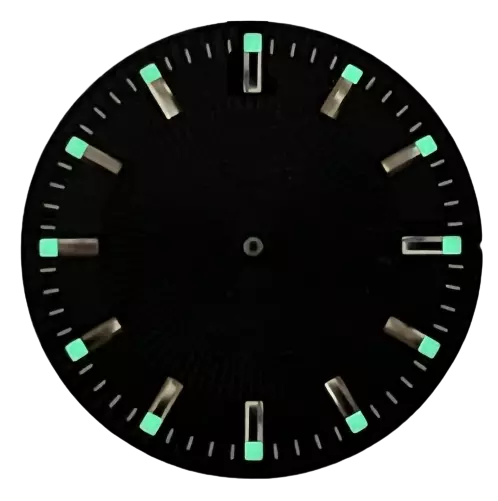
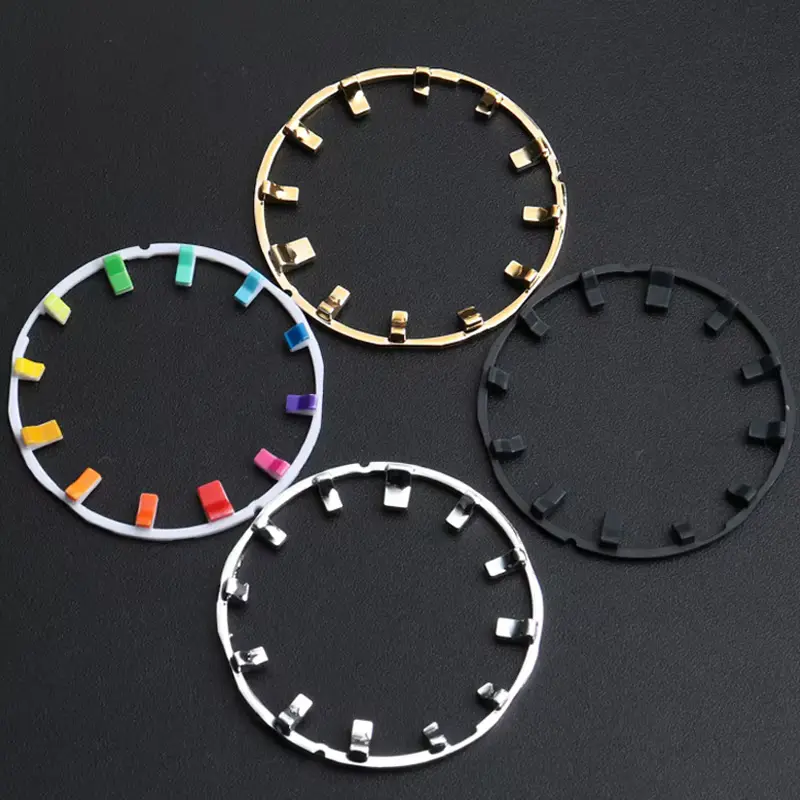
Hour markers are the symbols, numbers, or indices displayed on a watch dial that indicate the hours. They play a crucial role in ensuring the watch is readable and contribute to its overall design aesthetic.
There are different types of hour markers that can evoke various styles, from classic to modern.
| Types of hour markers | Description |
| Roman numerals | Classic numeral system (I, II, III, etc.) for an elegant, traditional look. |
| Arabic numerals | Numeric markers (1, 2, 3, etc.)for a modern and clear representation of time. |
| Dots | Small circular or rectangular markers indicating the hours, providing a minimalist look. |
| Sticks | Long, thin markers resembling sticks, often used in place of numbers for a sleek appearance. |
| Baton-shaped markers | Simple, straight lines, for minimalist designs. |
| Mixed markers | Combination of different styles, such as Roman numerals for hours and Arabic numerals for minutes, creating a unique dial design. |
8. Jewels
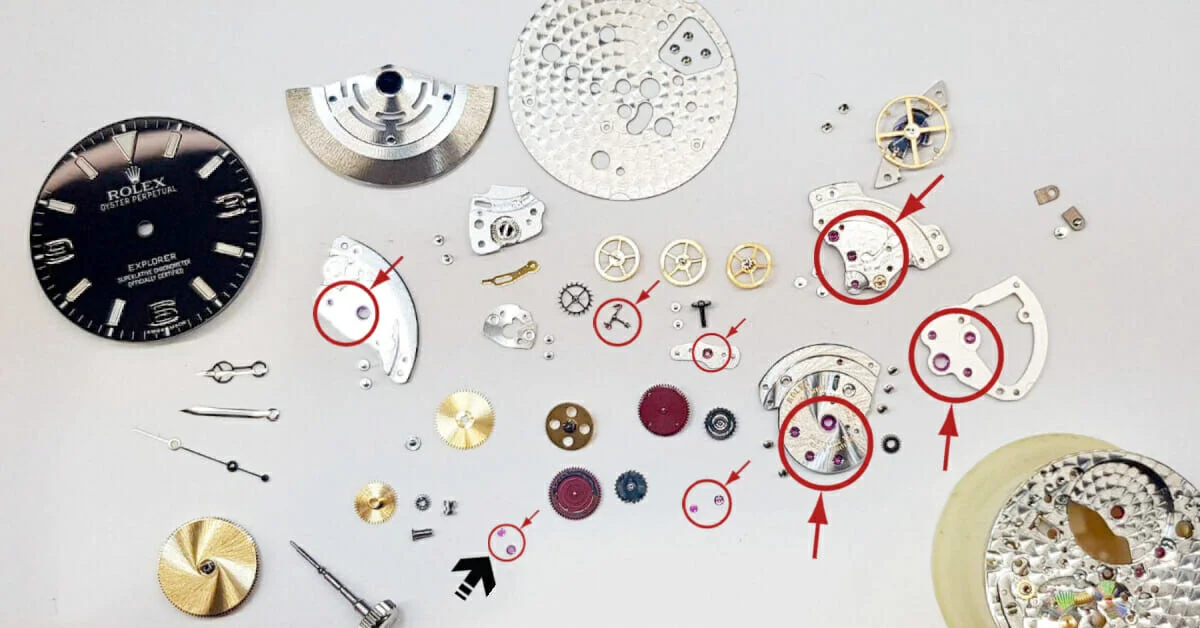
Jewels in watches are synthetic ruby bearings that serve as pivot points for the moving parts within a watch movement. Their primary function is to reduce friction between gears and pivots, which minimizes wear and tear, enhancing the watch’s longevity.
Additionally, by creating a smooth surface, jewels help maintain the precision of movement, leading to improved timekeeping accuracy.
9. Movement
The movement is the mechanism that powers the watch. It’s the heart of the timepiece, responsible for keeping accurate time. There are two main types of movements: mechanical and quartz.
Mechanical movements
This type can be further divided into manual and automatic. Manual movements require the wearer to wind the watch regularly to keep it running via using the crown. Besides, automatic movement uses a rotor to wind the mainspring as the watch is worn. This eliminates the need for manual winding.
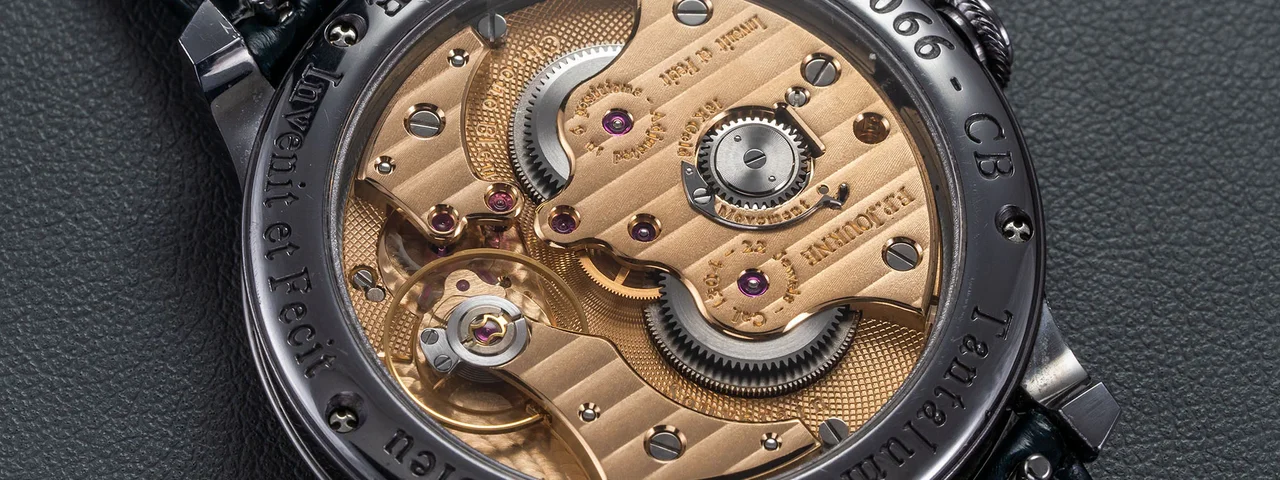
Quartz movements
Quartz movements are powered by a battery. They use a quartz crystal to generate an electrical signal that drives the watch’s hands. Quartz watches are often more affordable and widely produced, offering a different set of advantages in terms of accuracy and durability.
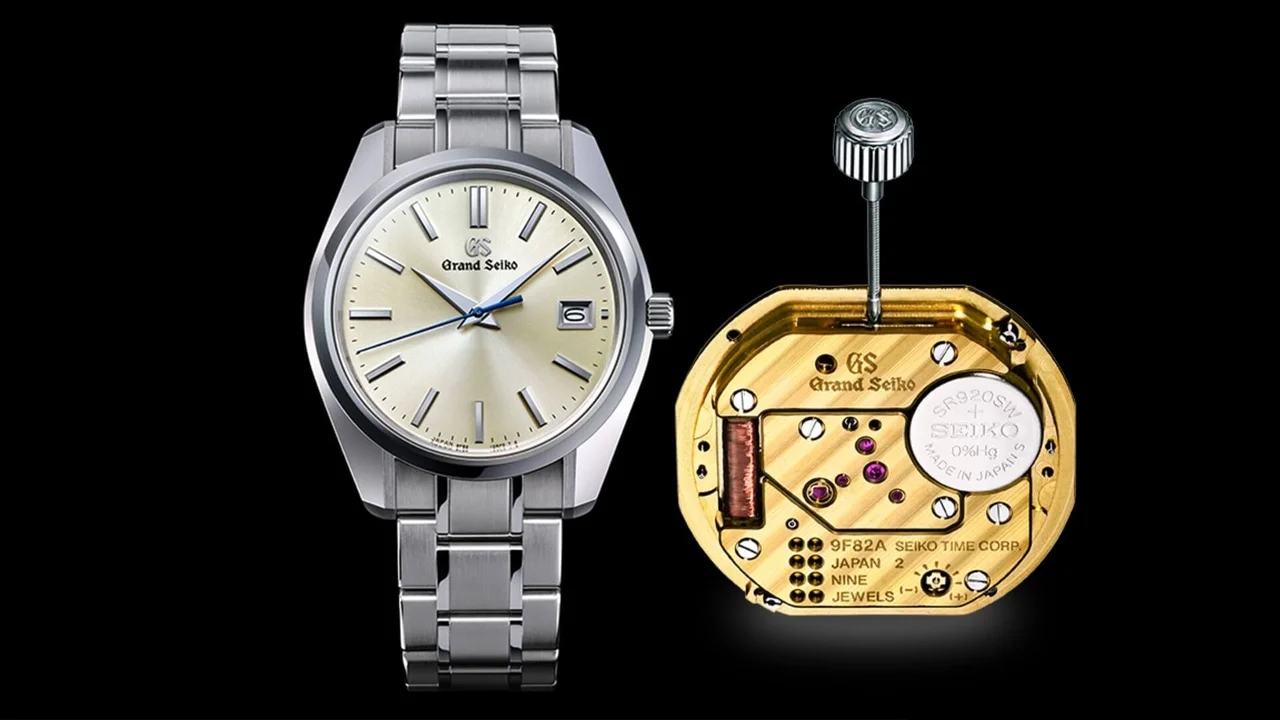
Watch Bands
10. Strap/Bracelet
The strap or bracelet is the part that attaches the watch to your wrist. It’s a crucial component that affects both the watch’s comfort and overall aesthetic.

What are common materials for watch straps?
Leather, metal, rubber or fabric are four common materials used for watch straps. Let’s take a look below to understand further its characteristics.
- Leather: Classic look, comfortable fit, available in various colors and textures.
- Metal: Durable and formal, typically made from stainless steel or titanium.
- Rubber: Flexible and water-resistant, ideal for sports or casual wear.
- Fabric: Lightweight and breathable, often made from nylon or canvas
What are the different types of watch straps?
There are numerous types of watch straps on the market. Below are typical ones that you might often find out.
- NATO Straps: Made from nylon, these straps are durable and adjustable, originally designed for military use.
- Link Bracelets: Composed of metal links, they can be adjusted to size and provide a sophisticated look.
- Perforated Racing Straps: Usually made from rubber or leather, featuring holes for breathability, perfect for sports enthusiasts.
11. Adjustment Holes
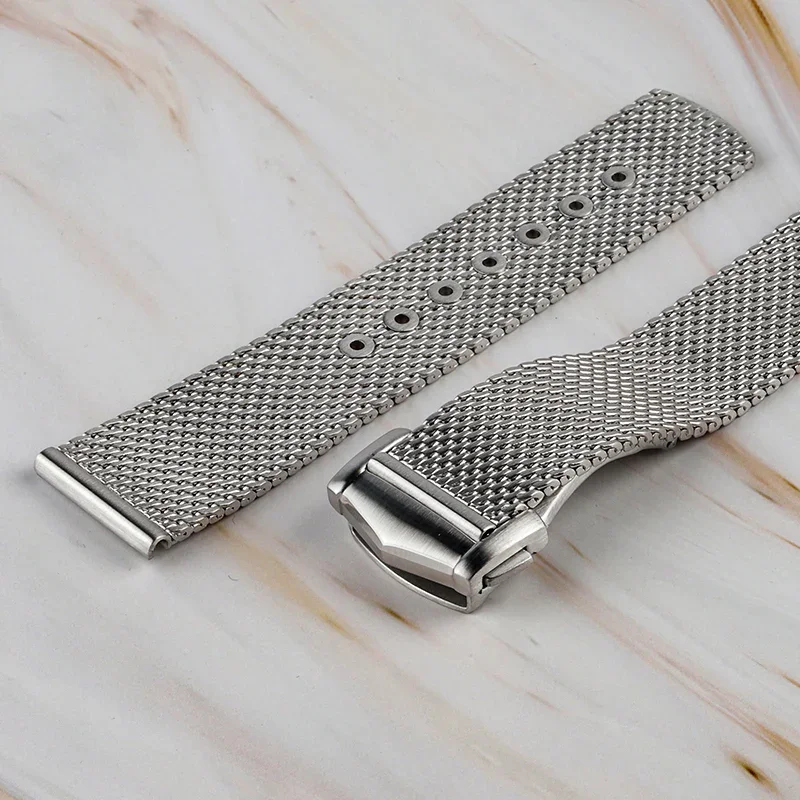
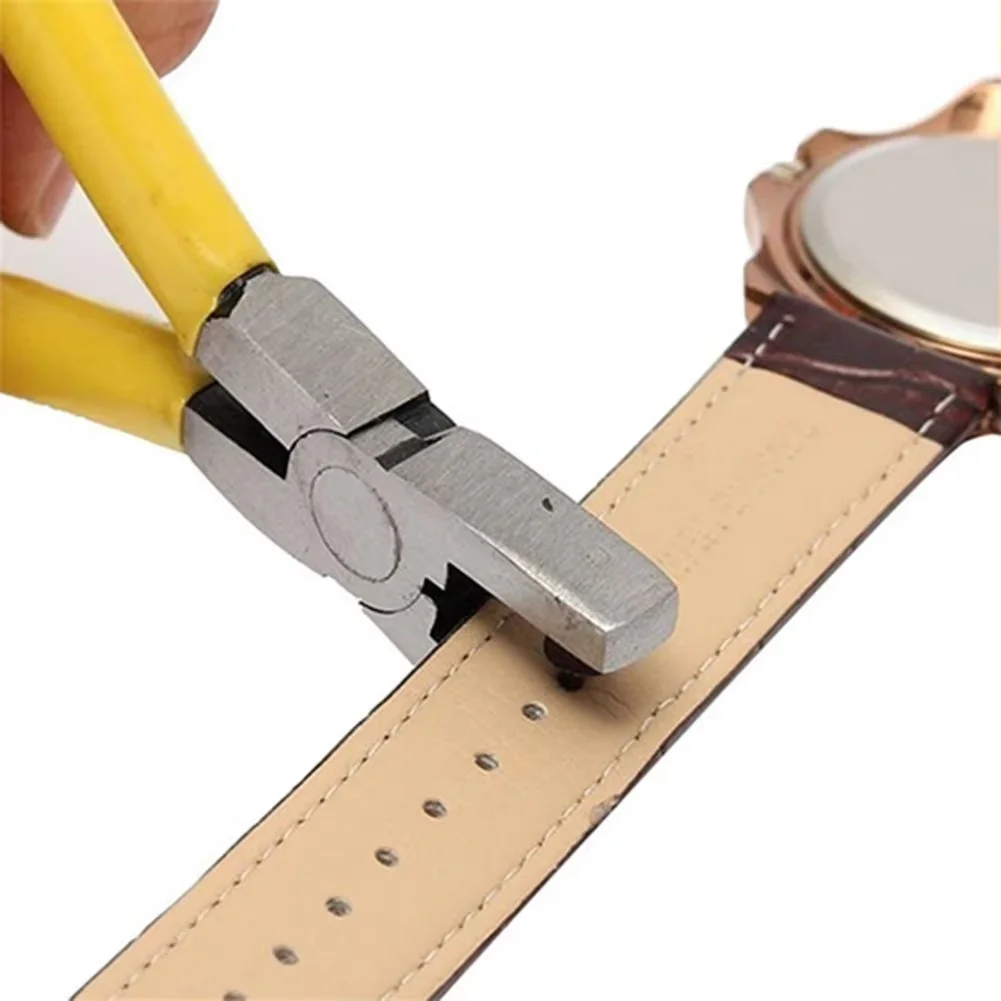
Adjustment holes are small holes on a watch strap that allow you to adjust the fit to your wrist size. They are typically located on the underside of the strap and can be accessed by sliding the buckle through them.
Adjustment holes are a common feature on leather straps, nylon straps, and other types of straps that are not designed to be resized. They provide a simple and effective way to ensure a comfortable and secure fit.
12. Buckle or Clasp
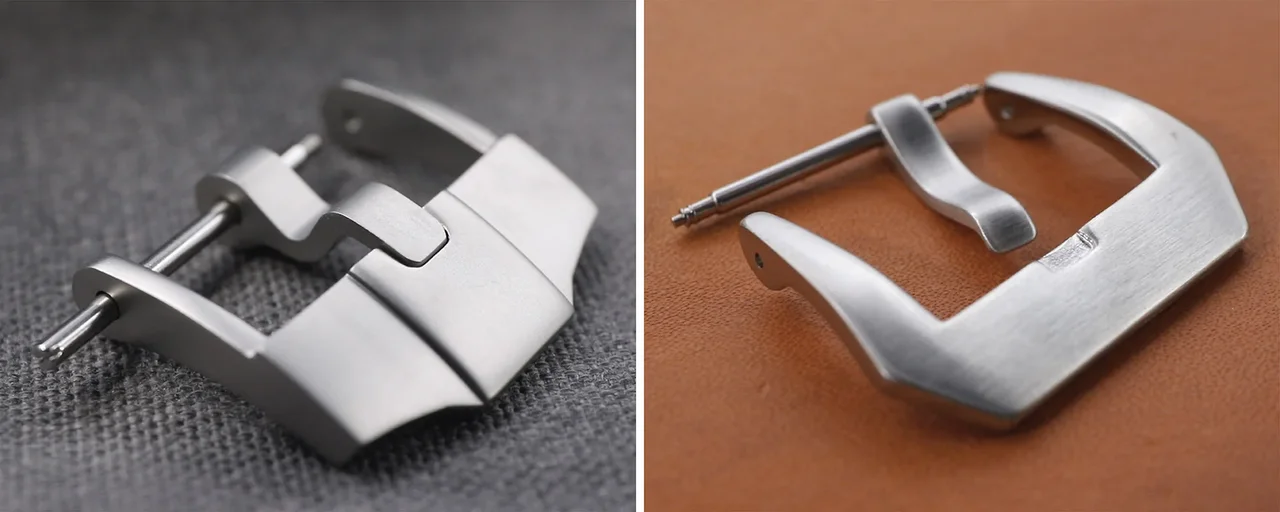
The buckle or clasp is the fastener that holds the strap or bracelet together on a watch. It is a crucial component that ensures the watch stays securely and comfortably attached to your wrist.
There are various types of watch clasp, each offering different levels of security and style. The following are common types to keep in mind.
| Clasp types | Description | Common use |
| Tang buckle | Traditional belt-like buckle with a pin that fits into adjustment holes | Leather or fabric straps |
| Deployment Clasp | Foldable clasp with a push-button release mechanism for a more secure and adjustable fit | Metal bracelets, some leather straps. |
| Butterfly Clasp | Symmetrical clasp that folds over itself, offering a seamless, elegant appearance | Dress watches, luxury watches |
| Pin buckle | A simple buckle with a pin that slides through the strap | Leather straps |
| Jewelry clasp | Employ the mechanism of the latch through the fold with small, discreet design | Bracelet-style watches, women’s watches, luxury watches. |
| Fold-over Clasp | A type of deployment clasp that folds over the strap when closed | Metal bracelets |
13. Lugs
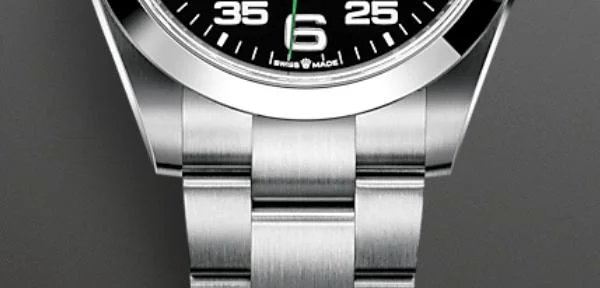
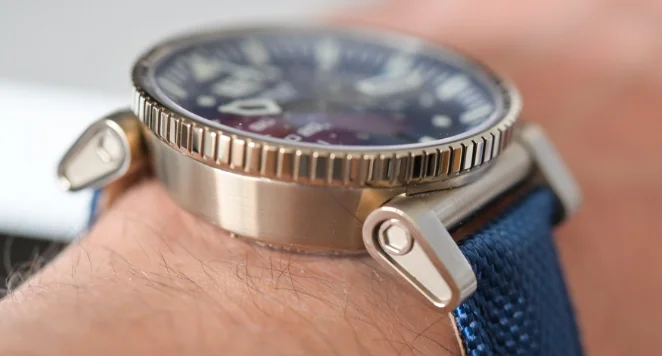
Lugs are the extensions in the case of a watch that hold the strap or bracelet in place. They are typically located on the top and bottom of the case and are designed to match the specific shape and size of the strap or bracelet.
Lugs can vary in shape and size, but they generally serve the same purpose: to securely attach the strap or bracelet to the watch case. The design of the lugs can also affect the overall aesthetic of the watch.
The distance between the lugs, known as the lug width, determines what type of strap or bracelet can be fitted. In addition to being functional, the design of the lugs adds to the overall style of the watch.
14. Lug Holes
Lug holes are the openings on the lugs of a watch that the strap or bracelet is attached to. They are typically small, round holes that are located near the ends of the lugs.
The number and placement of lug holes can vary depending on the watch model and the type of strap or bracelet it is designed to accommodate. Some watches may have a single lug hole, while others may have multiple holes to allow for different strap sizes.
Lug holes are an essential part of a watch’s construction, as they provide the necessary attachment points for the strap or bracelet. The design and placement of lug holes can also affect the overall appearance and functionality of the watch.
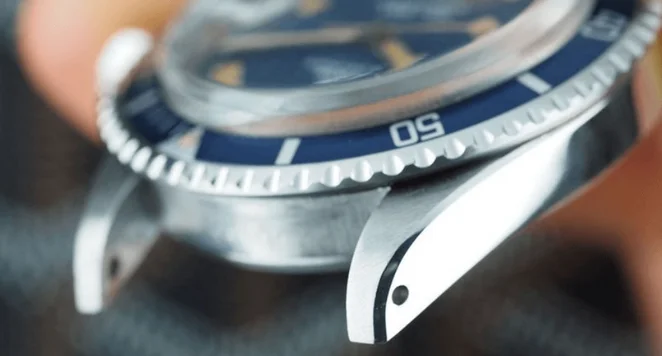
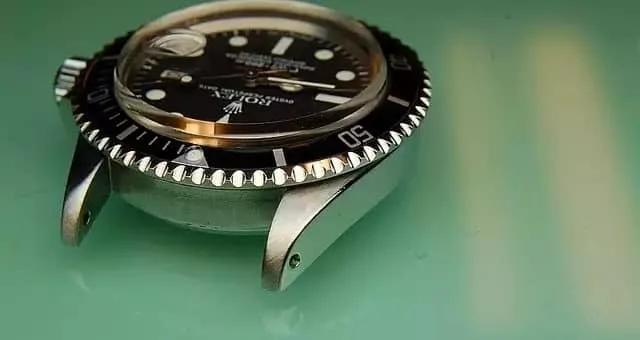
Watch Adjustment and Display Features
15. Pusher
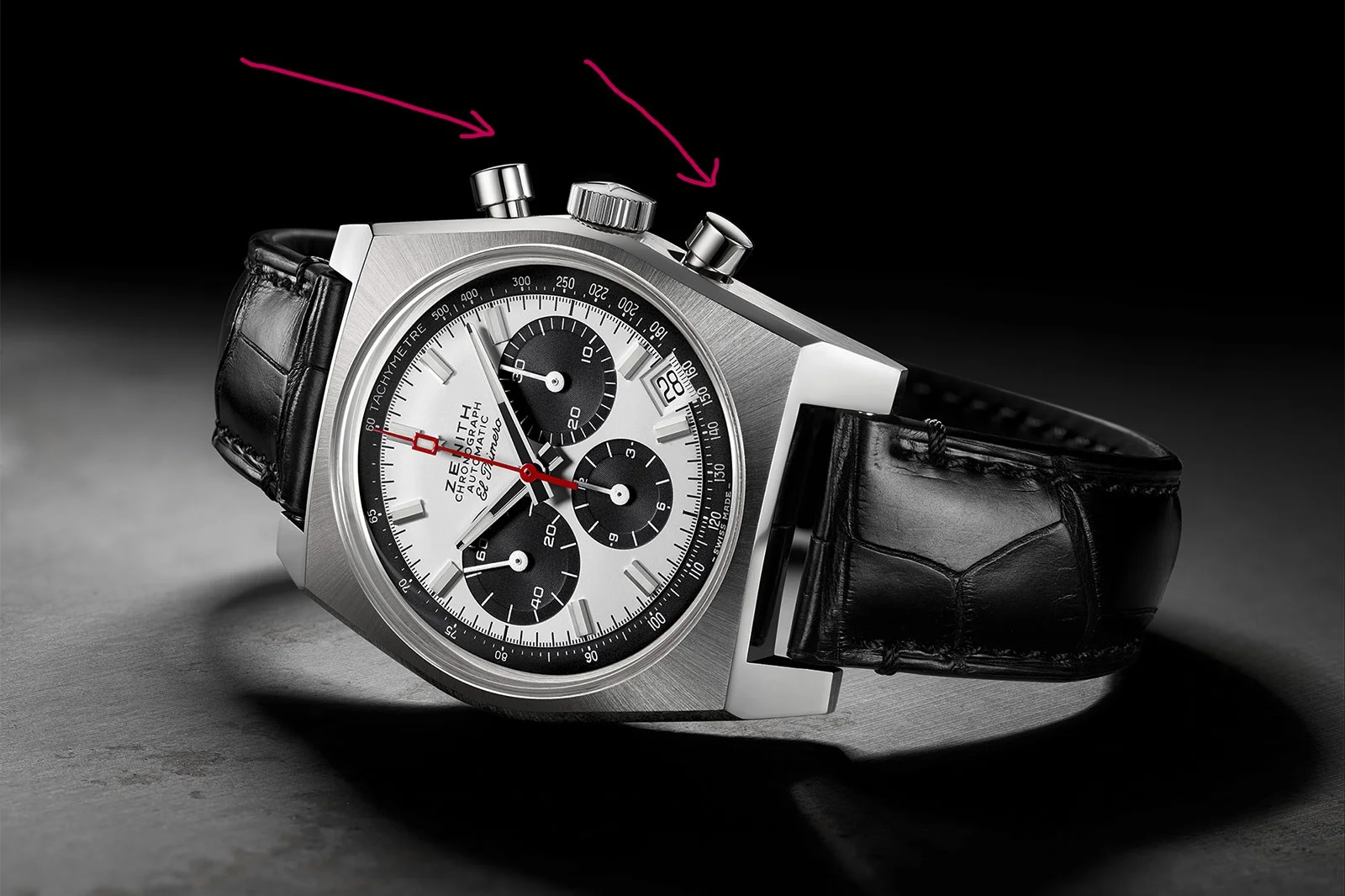
In addition to the crown, pushers are buttons located on the side of a watch case that are used to activate additional functions beyond just telling time.
Some functions can be listed such as chronograph, date setting, GMT or alarming function. The number and placement of pushers can vary depending on the specific functions that the watch offers.
16. Aperture
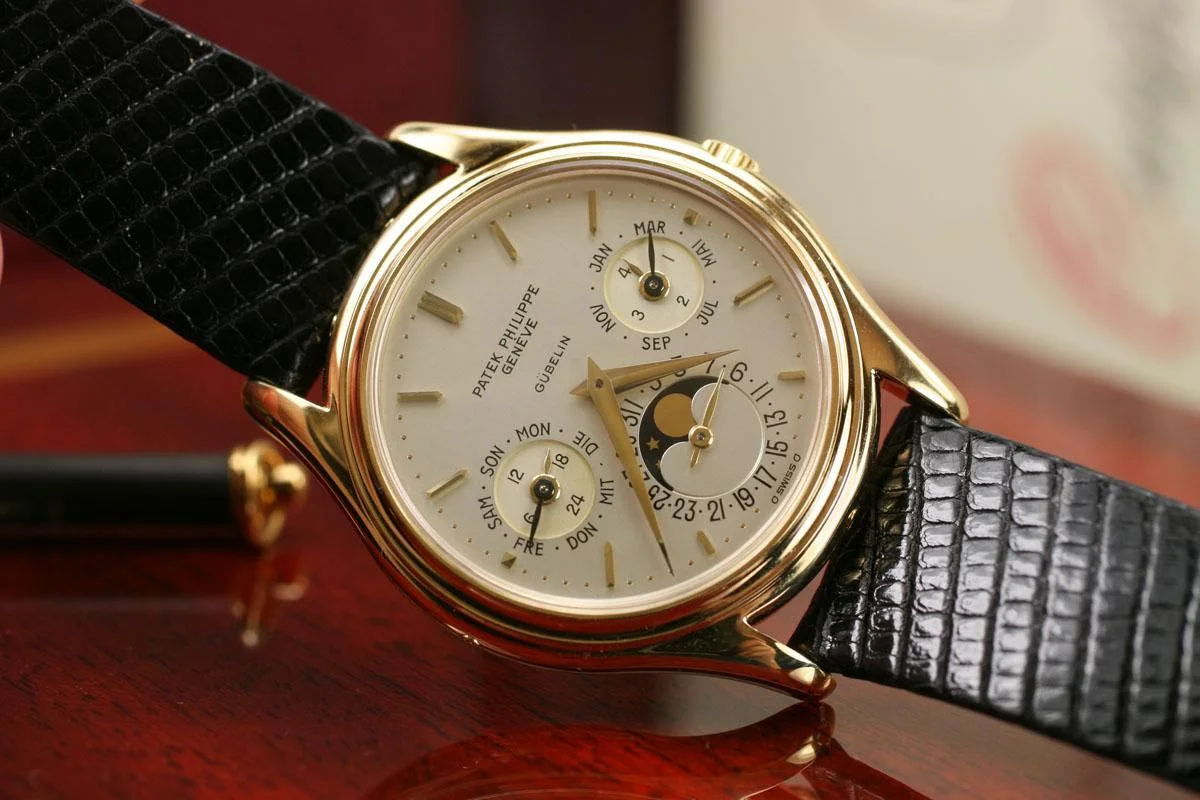
Apertures are small windows on a watch dial that display additional information, such as the date, day, or even more complex features like a moonphase.
Apertures can be located anywhere on the dial, but they are often found at the 3 o’clock position. The size and shape of apertures can vary depending on the specific information they display and the overall design of the watch.
17. Sub-dial
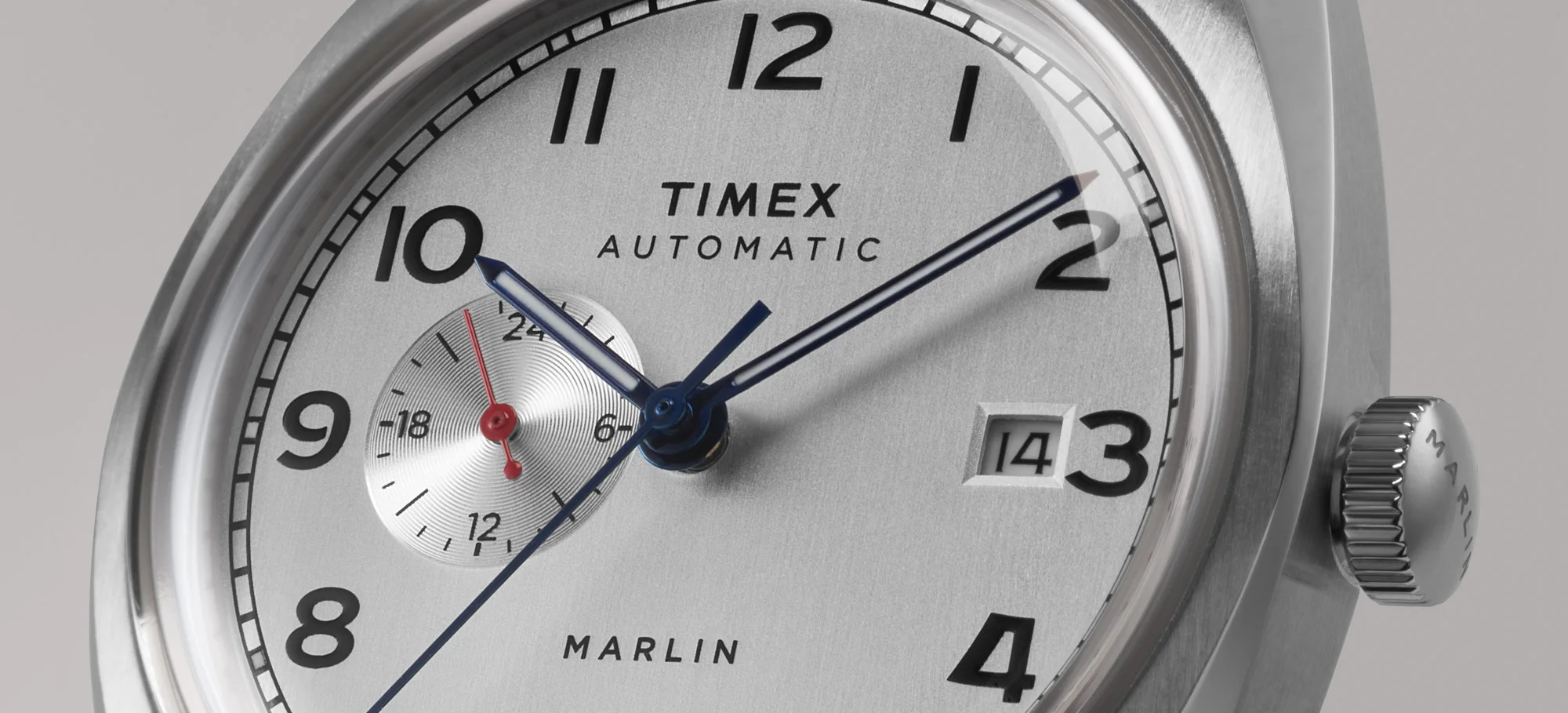
Sub-dials are smaller dials located on the main dial of a watch that display additional functions and complications. These can include current date, small seconds, measuring elapsed time (chronograph), second time zone (GMT), or moon phase.
Sub-dials can add complexity and functionality to a watch, but they can also make the dial more cluttered. The choice of complications depends on the watch’s intended use and the desired level of functionality.
In Short
This guide has outlined the essential components of a watch, from its case and dial to more intricate parts like movement and complications. Understanding these elements is key to selecting, maintaining, or simply appreciating the intricacies of a watch.
By familiarizing yourself with these parts, you will be better equipped to care for your timepiece and make well-informed decisions when investing in future watches.

